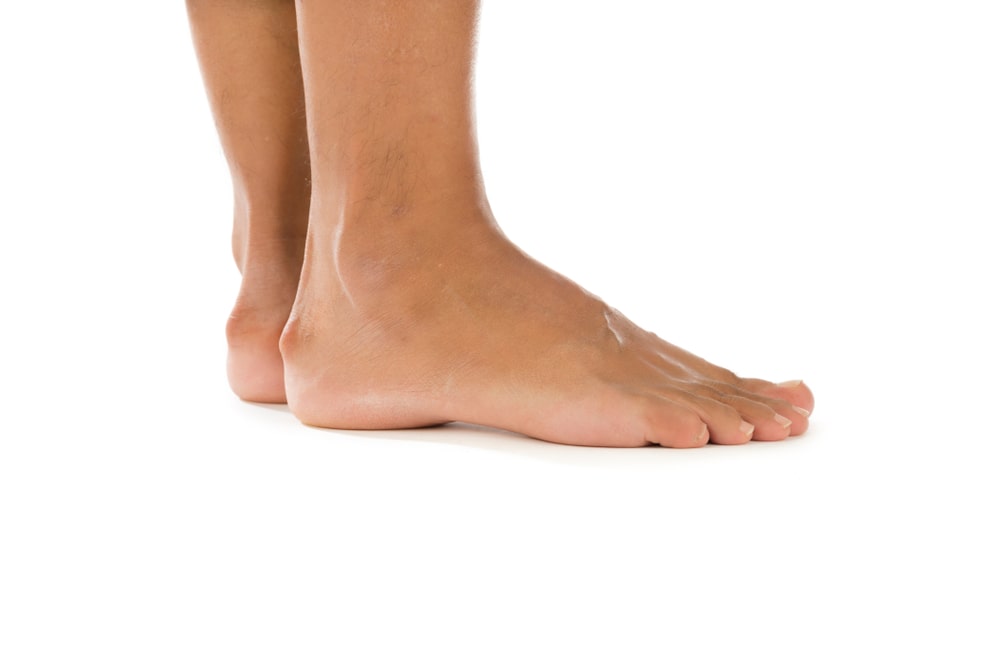
Haglund’s deformity is a very common clinical condition, but still poorly understood. It is a deformity that can develop in anyone and though it can present on its own, it commonly occurs simultaneously to other foot conditions. As with all conditions, it’s important to get a diagnosis as early on as possible and before selecting a treatment modality.
Haglund’s deformity is a bony bump that appears on the back of the heel bone. This bump forms where the Achilles tendon attaches to the heel. It is often referred to as “pump bump” because the rigid backs of women’s pump-style heeled shoes can create pressure that aggravates the enlargement when walking. In fact, any shoes with a rigid back, such as ice skates, men’s dress shoes, or women’s pumps, can cause this irritation. The soft tissue near the Achilles tendon becomes irritated when the bony enlargement rubs against rigid shoe backs. This often leads to painful bursitis, which is an inflammation of the bursa (a fluid-filled sac between the tendon and bone).
Though Haglund’s deformity is mostly a condition which arises spontaneously condition, several contributory factors like over-practice in runners, tight or poorly fitting shoes, or altered biomechanics of foot joints because of the de-aligned subtalar joint may play a role.
There are also some inherited foot structures that can make one prone to developing this condition, which includes:
If you have Haglund’s deformity, signs of inflammation like swelling, warmth, redness, and tenderness may be present over the posterior heel. This condition can mimic other causes of hindfoot pain like isolated retrocalcaneal bursitis, plantar fasciitis, and seronegative spondyloarthropathies. An isolated Haglund’s deformity can lead to posterior heel pain in runners due to adjacent soft tissue impingement by the heel counter. Often, patients with Haglund’s syndrome will present with a combination of Achilles tendinopathy, retrocalcaneal bursitis, or retrocalcaneal exostosis in addition to a Haglund’s deformity.
Clinical evaluation and lateral radiographs of the ankle are mostly enough to make a diagnosis of Haglund’s deformity. With a careful physical examination, it may be possible to differentiate whether the inflammation is anterior to the Achilles tendon or posterior. Diagnostic tests, such as an X-ray or MRI, may be used to evaluate the shape of the heel bone and to determine the severity of the condition. An X-ray or other tests can help a doctor decide which treatment options may be best. It’s important to get an accurate diagnosis, along with an understanding of any concomitant conditions, before beginning treatment.
Haglund’s deformity is often treated conservatively by altering the heel height in shoe wear, orthosis, physiotherapy, and anti-inflammatory drugs. For example, heel pads inside the backs of shoes can help reduce irritation and friction on the heel while inserting footwear arch supports may help people with high arches. Anti-inflammatory drugs will temporarily ease the pain and ice may also help relieve inflammation and pain. It’s important to avoid exercises that aggravate the condition, like running uphill.
Though surgical excision of the bony exostoses of the calcaneum is only required in resistant cases, surgical management is often required in patients with Haglund’s deformity, even when conservative measures are initially successful, as the underlying structural deformity will commonly lead to the recurrence of symptoms when the patient resumes full activity.
If you’re experiencing heel pain or other foot conditions, the experts at Corona Foot and Ankle can help diagnose, mitigate pain, and treat the malady. If our doctors determine you have a case of Haglund’s deformity, we are equipped to offer you the best treatment options. Whatever your foot pain, the experts at Corona Foot and Ankle are here to help. We offer safe, in-person office visits. For more information, or to book an appointment, contact us here.
Have any questions about treatment? Feel free to make an appointment, Our team will reach you soon!
Contact Us